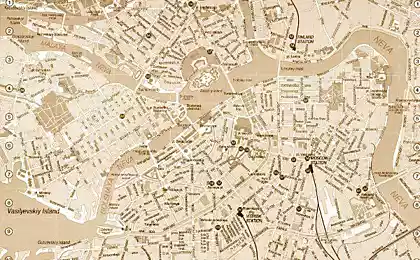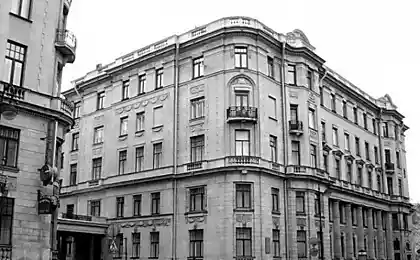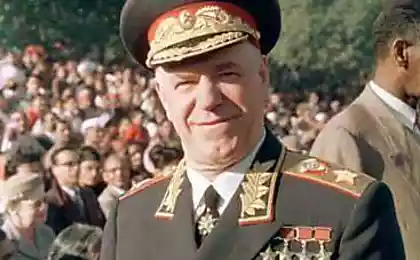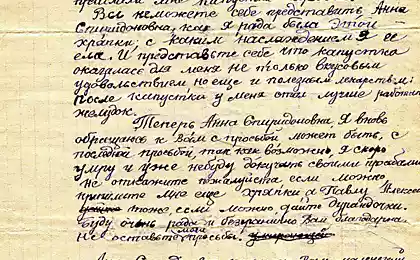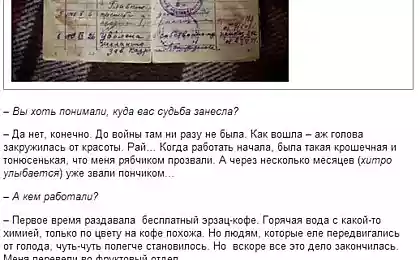2011
Chronicle of the blockade
On September 8, 1941, Leningrad was blockaded by German troops. The blockade, established during the Great Patriotic War, was lifted only after 872 days. During this time, up to 1.5 million people died. Chronicle of the blockade through the eyes of the inhabitants of the city.
25 photographs
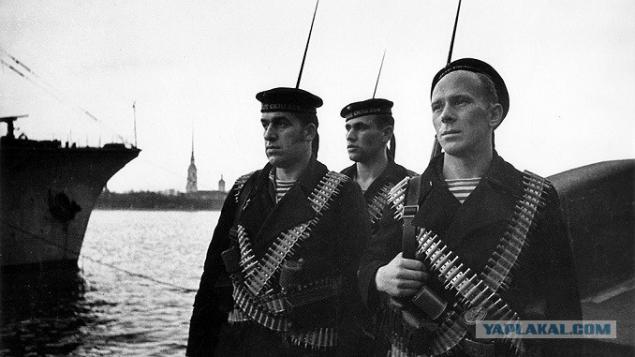
Initially, according to the Barbarossa plan, Leningrad was to be taken. After joining with Finnish troops, the Baltic Sea became an inland lake in Germany.
Hitler attached to the capture of the city mystical meaning "With the capture of Leningrad by the Bolsheviks, one of the symbols of the revolution will be lost and a complete catastrophe may come."
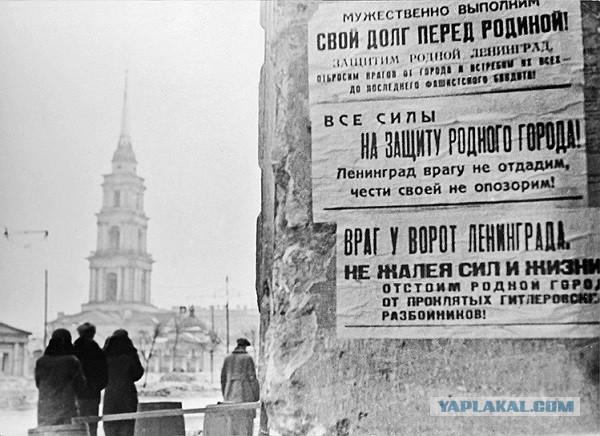
On September 8, 1941, German troops took Shlisselburg, and the blockade of Leningrad lasted 872 days.
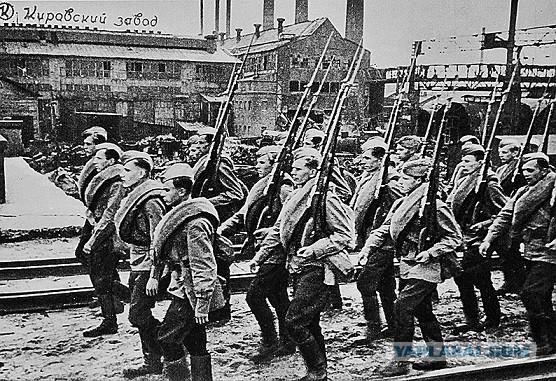
At that time Leningrad had 3.4 million inhabitants, in 1943 only 600 thousand. The number of deaths significantly exceeded the number of those who managed to escape from the besieged city along the “Road of Life” through Lake Ladoga.
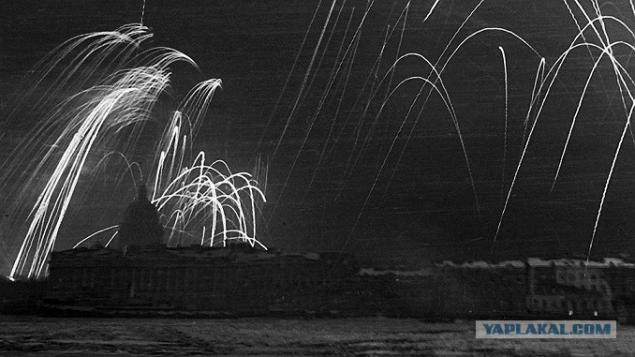
The evacuation of Leningrad residents began at the end of June 1941, and many residents did not want to leave their homes. From the besieged diary of the Leningrad schoolgirl Lena Mukhina "Already three days as the evacuation of children ... for 100 people attached 1 leader and 1 nanny." Bomb shelters, trenches and crevices are being completed throughout the city.”

In October 1941, food cards were introduced, workers and engineering staff began to receive 400 grams of bread per day, all the others 200 grams. This rate was reduced in January 1942. From the diary of Lena Mukhina “I work in the hospital at the Institute for the Protection of Motherhood and Infancy named after Clara Zetkin.” We have nurses on daily duty. The work is very difficult, but I get used to it a little. But on the days of duty, I am full and receive a first category card with 400 grams of bread a day.”
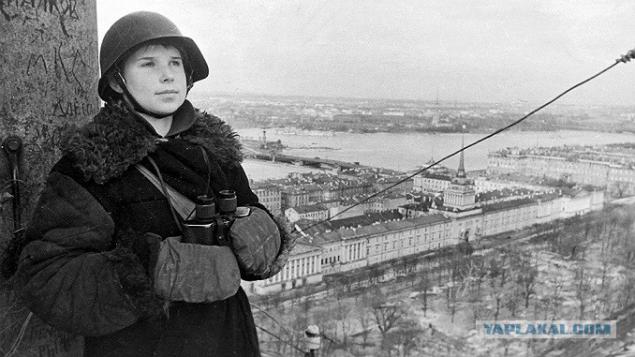
In the autumn of 1941, German troops tried to destroy the city with massive artillery shelling and bombing. The main attacks were aimed at food warehouses: for example, the famous Badaev warehouses where thousands of tons of food were located were destroyed. From Lena Mukhina’s diary, “The Germans will probably turn Leningrad into ruins and then occupy it.” All of us who escape will live in the forests and there we will die, or freeze from the cold, or starve to death, or be killed.
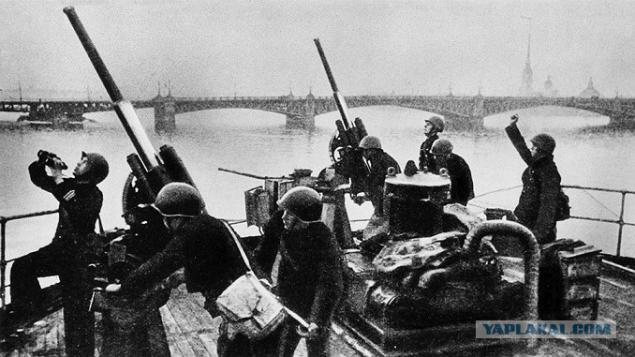
In November 1941, Soviet forces launched a counter-offensive, forcing the enemy to retreat to the Volkhov River, preventing German forces from joining Finnish forces east of Leningrad. By the end of the year, Finland had practically stopped fighting. In Leningrad, meanwhile, the water supply failed, the heating of residential buildings stopped. From the diary of Lena Mukhina “A harsh winter has come.” It’s cold at home because you need to save a lot of wood. The stove is heated only to cook dinner, it's dark ... The school is not heated, in some classes the ink is frozen, it's good that students are given without cards on a hot plate of soup.

By the end of 1941, the situation of Leningrad residents had deteriorated dramatically. From the diary of a doctor of one of the Leningrad hospitals "18.12.41 almost 4 months we are under siege. No food, no fuel. Despite all the tricks of the Nazis, the power plant survived, but the reserves are so insignificant that electric light is almost impossible to use. The houses have hardly been heated this year. Our superstructure was drowned until yesterday, and from today it is no longer drowned. Nothing. Leningraders have a triad: cold, hunger and darkness.
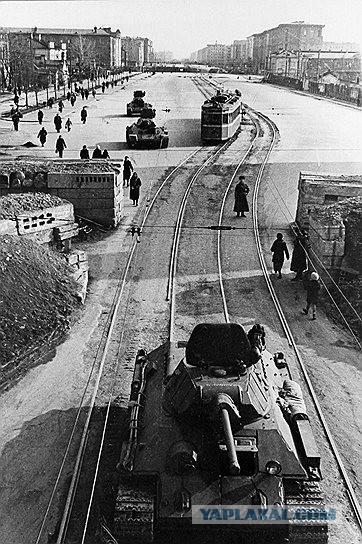
Deaths from hunger in Leningrad became mass: a day died several thousand people, while the male mortality exceeded the female.
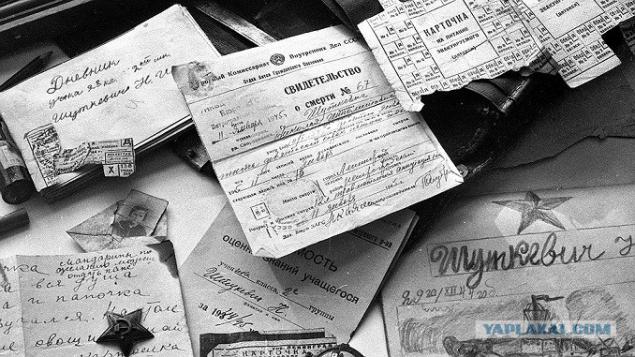
Another factor in high mortality among the population was abnormal frosts: in January 1942, the temperature dropped below 30 degrees Celsius. From Lena Mukhina’s diary, “Aka doesn’t get out of bed anymore.” Truth be told, if Aka dies, it's better for her and for mom and me. Since we have to divide everything into three parts, my mom and I will split everything in half. Just a mouthful. I don’t know how I can write such lines. But my heart is like a stone now.
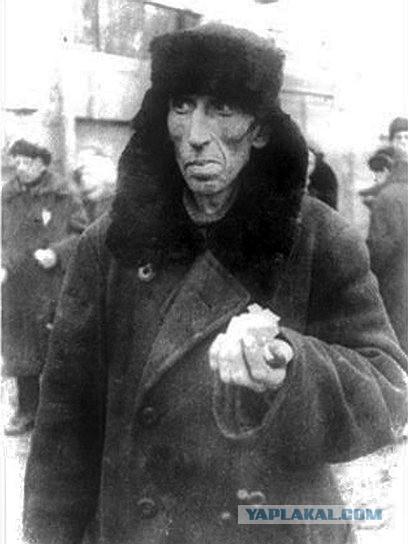
In 1942 in Leningrad was organized additional therapeutic food at higher standards, in special hospitals at factories and factories, as well as some city canteens. At the hotel "Astoria" began to work a hospital for scientists and creative workers. From the diary of Lena Mukhina: Here we are starving to death, and in Moscow Stalin gave a dinner in honor of Eden. What a mess. They eat like hell out there.”
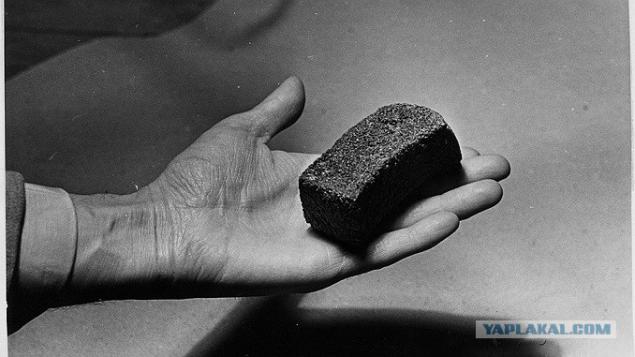
Due to the lack of food at enterprises and in public catering, food substitutes were actively used: in the bakery industry cellulose was added, soybean flour, intestines, animal blood plasma were added to the meat industry. From Lena Mukhina's diary, "Today we had a delicious soup with meat and pasta." Cat meat is enough for two more times. It would be nice to get a cat anywhere else.
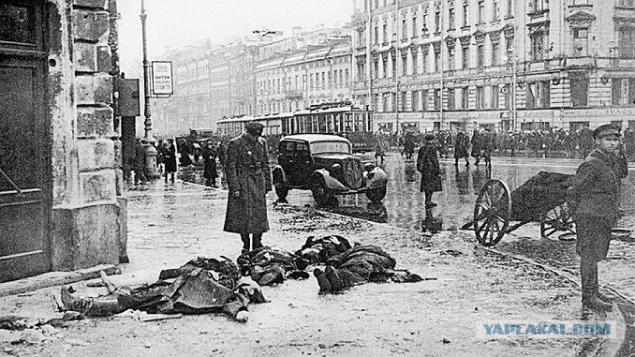
In 1941-42, Soviet troops made several attempts to break the blockade, but all failed. The only thing that connected Leningrad with a large land was the “Road of Life”, which through Lake Ladoga allowed to carry cargoes of any weight on the ice in winter.

Various efforts have been made to combat hunger. Gardens were arranged on “any free piece of land”. They grew potatoes, cabbage and other vegetables.
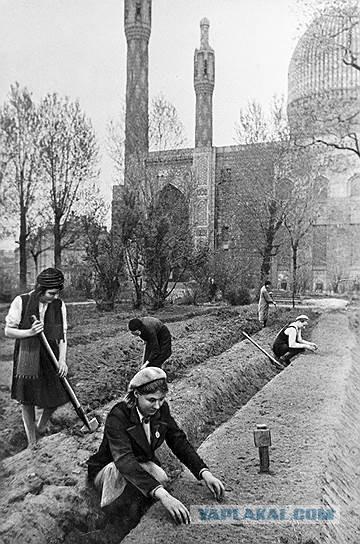
An integral part for the Leningraders was the extraction of fuel: for heating residential buildings, bourgeois stoves were mainly used, which were heated with everything that could be burned. Electric vehicles stopped working in the city. From Lena Mukhina’s diary, “Yesterday my mother and I sat by an extinct stove, snuggled tightly together.” We were so happy, we were warm from the stove. Our stomachs were full. We dreamed of our impoverished lives. That we will be ready for lunch.”
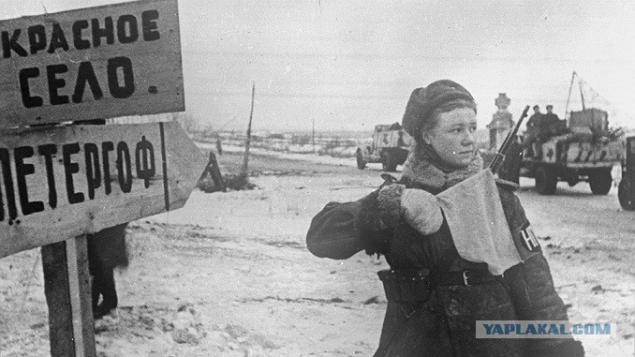
In the spring of 1942, food improved with warming, and the number of sudden deaths on the street decreased in Leningrad. The entire working population came out to clean the city of garbage. From the diary of Lena Mukhina “Sweet, dear, beloved mother”. You didn't live to improve for a few days. You died on the 7th morning, and on the 11th they added bread, on the 12th they gave cereal.

From the diary of schoolgirl Lena Mukhina “I would rather leave this damn Leningrad.” It is a beautiful city and I am very used to it. But I can't see him anymore, much less love him. A city where I went through so much grief, where I lost everything I had. No, this city, its name I will remember with a shudder in my heart. Soon, soon I will leave here and hope forever.
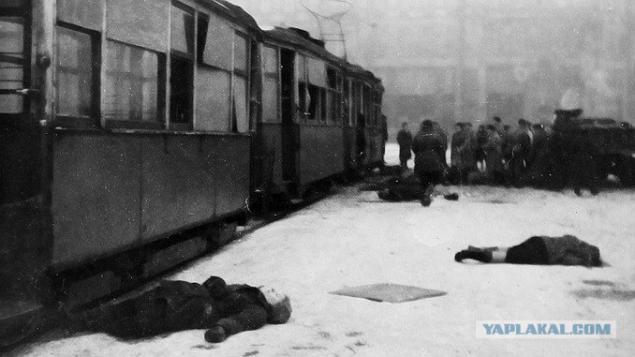
In April 1942, a regular passenger tram was again launched in Leningrad - for this it was necessary to restore about 150 km of the contact network. The launch of the trolleybus at the same time, the authorities considered inappropriate. From the diary of Lena Mukhina "Today went trams, what joy."

In the summer of 1942, the German command decided to intensify hostilities on the Leningrad front and, first of all, to intensify shelling and bombing of the city.

From the diary of Lena Mukhina “Second air alert of the day”. How foolish and annoying it would be to die before leaving, having experienced all the horrors of this winter, the hunger and the cold. Maybe this is my last line. I very much ask those who find this diary to send it to the address of Gorky, Mogilevich Lane 5, Q1 E.N. Zhurkova.
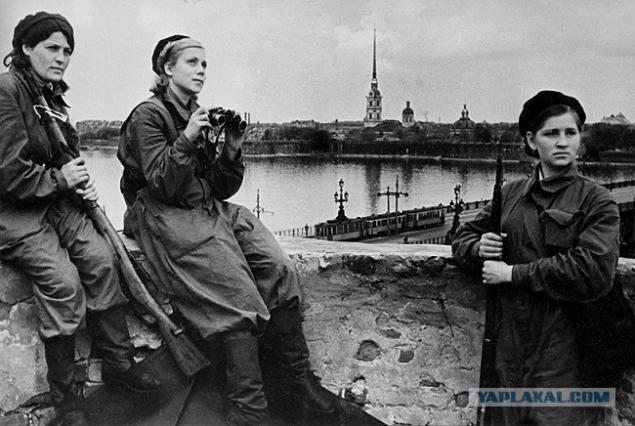
In the winter of 1943, Soviet troops finally broke the blockade. On January 18, Shlisselburg was liberated and the entire southern coast of Ladoga was cleared. The land connection of Leningrad with the Big Land was restored. Roads and railways were built, which were called “Roads of Victory”. By this time there were about 600,000 residents in the city.

Signs with the inscription “Citizens, this side of the street is the most dangerous during shelling”, which appeared in Leningrad during the blockade, were later restored in memory of the tragic events.
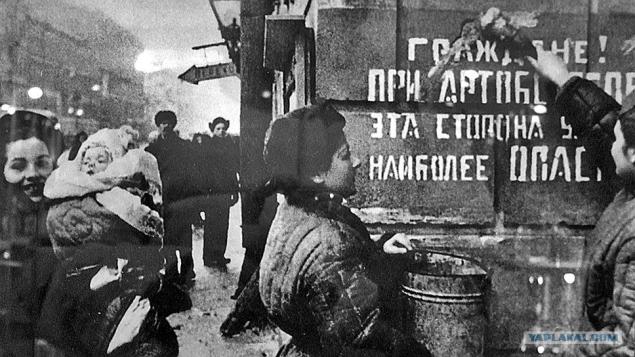
January 27, 1944 was finally lifted the siege of Leningrad, which lasted almost two and a half years. According to various sources, up to one and a half million citizens died at this time, 97% of whom died of starvation. On May 1, 1945, for the heroism and courage shown by the inhabitants during the blockade, Leningrad received the title of hero city.

From Wikipedia: Elena Vladimirovna Mukhina (1924-1991) – Soviet artist; at the beginning of the Great Patriotic War, Leningrad schoolgirl, author of “The Blockade Diary of Lena Mukhina”.
I'm done: Source

25 photographs

Initially, according to the Barbarossa plan, Leningrad was to be taken. After joining with Finnish troops, the Baltic Sea became an inland lake in Germany.
Hitler attached to the capture of the city mystical meaning "With the capture of Leningrad by the Bolsheviks, one of the symbols of the revolution will be lost and a complete catastrophe may come."

On September 8, 1941, German troops took Shlisselburg, and the blockade of Leningrad lasted 872 days.

At that time Leningrad had 3.4 million inhabitants, in 1943 only 600 thousand. The number of deaths significantly exceeded the number of those who managed to escape from the besieged city along the “Road of Life” through Lake Ladoga.

The evacuation of Leningrad residents began at the end of June 1941, and many residents did not want to leave their homes. From the besieged diary of the Leningrad schoolgirl Lena Mukhina "Already three days as the evacuation of children ... for 100 people attached 1 leader and 1 nanny." Bomb shelters, trenches and crevices are being completed throughout the city.”

In October 1941, food cards were introduced, workers and engineering staff began to receive 400 grams of bread per day, all the others 200 grams. This rate was reduced in January 1942. From the diary of Lena Mukhina “I work in the hospital at the Institute for the Protection of Motherhood and Infancy named after Clara Zetkin.” We have nurses on daily duty. The work is very difficult, but I get used to it a little. But on the days of duty, I am full and receive a first category card with 400 grams of bread a day.”

In the autumn of 1941, German troops tried to destroy the city with massive artillery shelling and bombing. The main attacks were aimed at food warehouses: for example, the famous Badaev warehouses where thousands of tons of food were located were destroyed. From Lena Mukhina’s diary, “The Germans will probably turn Leningrad into ruins and then occupy it.” All of us who escape will live in the forests and there we will die, or freeze from the cold, or starve to death, or be killed.

In November 1941, Soviet forces launched a counter-offensive, forcing the enemy to retreat to the Volkhov River, preventing German forces from joining Finnish forces east of Leningrad. By the end of the year, Finland had practically stopped fighting. In Leningrad, meanwhile, the water supply failed, the heating of residential buildings stopped. From the diary of Lena Mukhina “A harsh winter has come.” It’s cold at home because you need to save a lot of wood. The stove is heated only to cook dinner, it's dark ... The school is not heated, in some classes the ink is frozen, it's good that students are given without cards on a hot plate of soup.

By the end of 1941, the situation of Leningrad residents had deteriorated dramatically. From the diary of a doctor of one of the Leningrad hospitals "18.12.41 almost 4 months we are under siege. No food, no fuel. Despite all the tricks of the Nazis, the power plant survived, but the reserves are so insignificant that electric light is almost impossible to use. The houses have hardly been heated this year. Our superstructure was drowned until yesterday, and from today it is no longer drowned. Nothing. Leningraders have a triad: cold, hunger and darkness.

Deaths from hunger in Leningrad became mass: a day died several thousand people, while the male mortality exceeded the female.

Another factor in high mortality among the population was abnormal frosts: in January 1942, the temperature dropped below 30 degrees Celsius. From Lena Mukhina’s diary, “Aka doesn’t get out of bed anymore.” Truth be told, if Aka dies, it's better for her and for mom and me. Since we have to divide everything into three parts, my mom and I will split everything in half. Just a mouthful. I don’t know how I can write such lines. But my heart is like a stone now.

In 1942 in Leningrad was organized additional therapeutic food at higher standards, in special hospitals at factories and factories, as well as some city canteens. At the hotel "Astoria" began to work a hospital for scientists and creative workers. From the diary of Lena Mukhina: Here we are starving to death, and in Moscow Stalin gave a dinner in honor of Eden. What a mess. They eat like hell out there.”

Due to the lack of food at enterprises and in public catering, food substitutes were actively used: in the bakery industry cellulose was added, soybean flour, intestines, animal blood plasma were added to the meat industry. From Lena Mukhina's diary, "Today we had a delicious soup with meat and pasta." Cat meat is enough for two more times. It would be nice to get a cat anywhere else.

In 1941-42, Soviet troops made several attempts to break the blockade, but all failed. The only thing that connected Leningrad with a large land was the “Road of Life”, which through Lake Ladoga allowed to carry cargoes of any weight on the ice in winter.

Various efforts have been made to combat hunger. Gardens were arranged on “any free piece of land”. They grew potatoes, cabbage and other vegetables.

An integral part for the Leningraders was the extraction of fuel: for heating residential buildings, bourgeois stoves were mainly used, which were heated with everything that could be burned. Electric vehicles stopped working in the city. From Lena Mukhina’s diary, “Yesterday my mother and I sat by an extinct stove, snuggled tightly together.” We were so happy, we were warm from the stove. Our stomachs were full. We dreamed of our impoverished lives. That we will be ready for lunch.”

In the spring of 1942, food improved with warming, and the number of sudden deaths on the street decreased in Leningrad. The entire working population came out to clean the city of garbage. From the diary of Lena Mukhina “Sweet, dear, beloved mother”. You didn't live to improve for a few days. You died on the 7th morning, and on the 11th they added bread, on the 12th they gave cereal.

From the diary of schoolgirl Lena Mukhina “I would rather leave this damn Leningrad.” It is a beautiful city and I am very used to it. But I can't see him anymore, much less love him. A city where I went through so much grief, where I lost everything I had. No, this city, its name I will remember with a shudder in my heart. Soon, soon I will leave here and hope forever.

In April 1942, a regular passenger tram was again launched in Leningrad - for this it was necessary to restore about 150 km of the contact network. The launch of the trolleybus at the same time, the authorities considered inappropriate. From the diary of Lena Mukhina "Today went trams, what joy."

In the summer of 1942, the German command decided to intensify hostilities on the Leningrad front and, first of all, to intensify shelling and bombing of the city.

From the diary of Lena Mukhina “Second air alert of the day”. How foolish and annoying it would be to die before leaving, having experienced all the horrors of this winter, the hunger and the cold. Maybe this is my last line. I very much ask those who find this diary to send it to the address of Gorky, Mogilevich Lane 5, Q1 E.N. Zhurkova.

In the winter of 1943, Soviet troops finally broke the blockade. On January 18, Shlisselburg was liberated and the entire southern coast of Ladoga was cleared. The land connection of Leningrad with the Big Land was restored. Roads and railways were built, which were called “Roads of Victory”. By this time there were about 600,000 residents in the city.

Signs with the inscription “Citizens, this side of the street is the most dangerous during shelling”, which appeared in Leningrad during the blockade, were later restored in memory of the tragic events.

January 27, 1944 was finally lifted the siege of Leningrad, which lasted almost two and a half years. According to various sources, up to one and a half million citizens died at this time, 97% of whom died of starvation. On May 1, 1945, for the heroism and courage shown by the inhabitants during the blockade, Leningrad received the title of hero city.

From Wikipedia: Elena Vladimirovna Mukhina (1924-1991) – Soviet artist; at the beginning of the Great Patriotic War, Leningrad schoolgirl, author of “The Blockade Diary of Lena Mukhina”.
I'm done: Source

